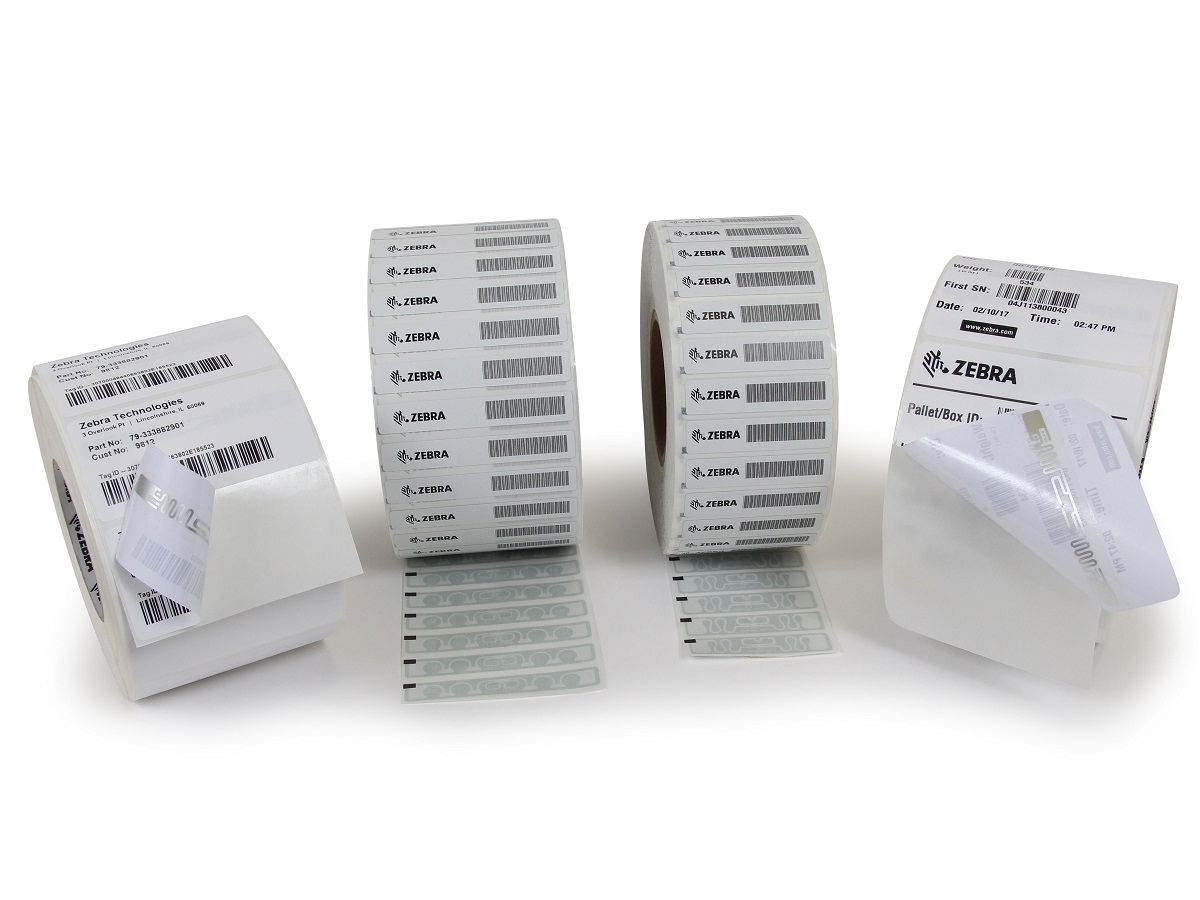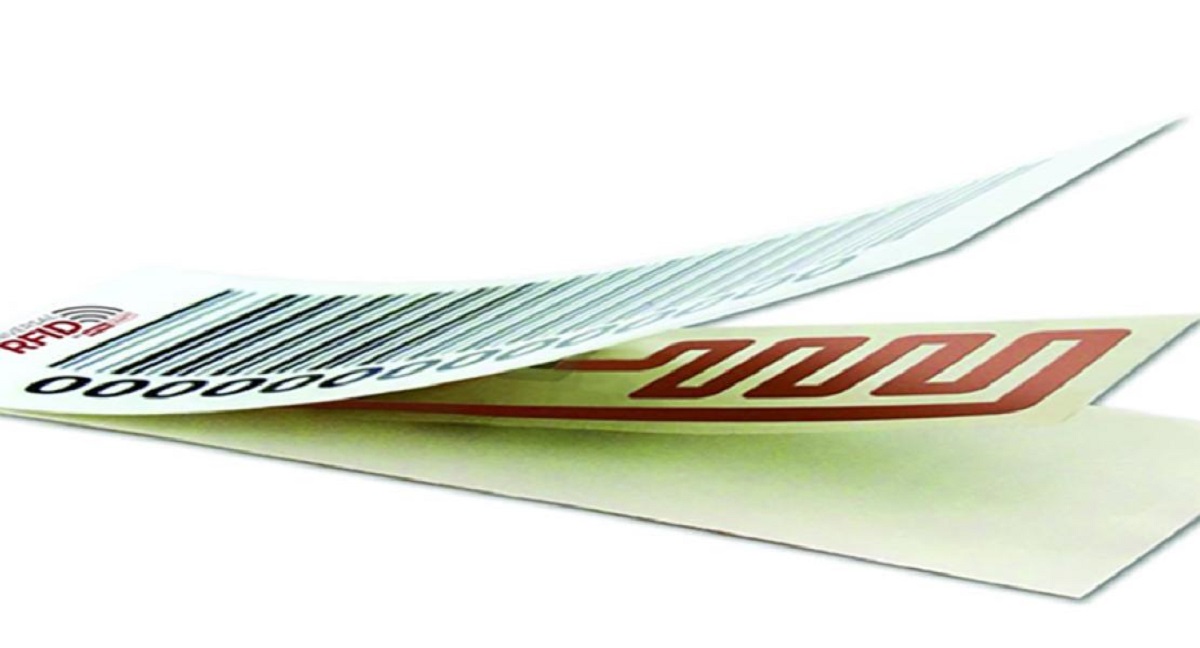Introduction
Radio-Frequency Identification (RFID) is a technology that has revolutionized the way businesses manage and track their assets. With its ability to automatically collect data and provide real-time information, RFID has become an essential tool for industries such as retail, logistics, healthcare, and manufacturing.
RFID uses radio waves to transmit data between electronic tags attached to objects and RFID readers or scanners. These tags, also known as transponders or smart labels, contain a unique identifier that can be read by the RFID reader. The information collected from the tags is then processed and utilized for various applications, including asset tracking, inventory management, and supply chain optimization.
The concept of RFID can be traced back to World War II when it was used to identify friendly aircraft. However, it wasn’t until the late 1990s that RFID gained significant popularity and became more accessible due to advancements in technology and decreasing costs.
Today, RFID technology offers a multitude of benefits for businesses looking to streamline their operations and improve efficiency. By implementing RFID systems, organizations can accurately track and locate assets, reduce manual errors, enhance inventory visibility, improve security, and automate various processes. These advantages make it an invaluable tool for businesses of all sizes.
However, like any technology, RFID also presents its own set of challenges. These include issues such as tag collision, limited read range, data accuracy, data privacy, and integration with existing systems. Overcoming these challenges requires careful planning, system design, and consideration of the specific needs of each business.
In this article, we will delve deeper into the world of RFID and asset tracking. We will explore how RFID works, the different types of RFID systems, the benefits it offers, as well as the challenges businesses may face. We will also discuss the implementation of RFID asset tracking and some of its prominent applications in various industries. By the end, you will have a comprehensive understanding of RFID technology and its potential impact on asset management.
What is RFID?
Radio-Frequency Identification (RFID) is a technology that utilizes radio waves to automatically identify and track objects. It involves the use of RFID tags or transponders that are attached to assets and RFID readers or scanners that capture the information stored in these tags. This technology has become widely used across various industries due to its ability to provide fast and accurate data collection.
At its core, RFID consists of three main components: the RFID tag, the RFID reader, and the software system. The RFID tag, also known as a transponder or smart label, is a small electronic device that is attached to an object. It contains a microchip that stores unique identifying information and an antenna that allows for communication with the RFID reader. The RFID reader, on the other hand, is responsible for transmitting and receiving radio waves to communicate with the tags in its vicinity. It captures the information stored in the tags and sends it to the software system for processing and analysis.
RFID technology operates on different frequency bands, including low frequency (LF), high frequency (HF), and ultra-high frequency (UHF). Each frequency has its own advantages and applications. For example, LF RFID is commonly used for proximity access control and animal tracking, while UHF RFID is preferred for long-range asset tracking and supply chain management.
The communication between the RFID reader and the RFID tags can occur in two different ways: passive RFID and active RFID. In passive RFID systems, the tags are powered by the electromagnetic energy generated by the RFID reader. They do not have their own power source and rely on the reader to send energy for communication. Active RFID systems, on the other hand, have their own power source and can actively transmit and receive signals. This allows for longer read ranges and more frequent updates of tag data.
RFID technology offers several advantages over traditional barcode systems. Unlike barcodes, RFID tags do not require direct line-of-sight to be read and can be read at a much faster speed. Additionally, RFID tags can store a larger amount of data, allowing for more detailed information to be associated with each asset. The automatic nature of RFID also eliminates the need for manual data entry, reducing human errors and improving operational efficiency.
In the next section, we will explore how RFID technology works in more detail, uncovering the intricacies behind its data capture and communication process.
How Does RFID Work?
RFID technology works through the use of electromagnetic fields and radio waves to wirelessly transfer data between RFID tags and readers. It involves a three-step process: tag identification, data transmission, and data processing.
Tag Identification: When an RFID tag comes within range of an RFID reader, the reader generates an electromagnetic field. This field powers the tag’s microchip and activates it. The tag then sends back a unique identifier (ID) stored in its memory to the reader through radio waves. This ID is used to identify the specific asset associated with the tag.
Data Transmission: After the tag ID is received by the reader, the reader may request additional information from the tag, depending on the application. The tag responds by transmitting the requested data, such as product details, manufacturing date, or location information. This data is sent back to the reader via radio waves.
Data Processing: Once the reader receives the data from the tag, it is processed and sent to the software system for further analysis and action. The software system can be designed to perform tasks such as asset tracking, inventory management, or supply chain optimization based on the data collected from the RFID tags.
RFID tags can be either passive or active, as mentioned earlier. Passive RFID tags do not have their own power source and rely on the energy transmitted by the reader to activate and communicate. Active RFID tags, on the other hand, have their own power source and can continuously transmit signals, allowing for longer read ranges and more frequent updates of tag data.
RFID technology operates on different frequency bands, including low frequency (LF), high frequency (HF), and ultra-high frequency (UHF). LF and HF RFID are typically used for short-range applications, while UHF RFID enables longer read ranges and is commonly used in supply chain management and asset tracking scenarios.
Additionally, RFID systems can be used in different modes, such as read-only mode and read-write mode. In read-only mode, the data on the RFID tag is prewritten and cannot be modified. In read-write mode, the RFID tag can be written to, allowing for the dynamic updating of information on the tag.
The ability of RFID technology to wirelessly transmit data and automatically identify assets has made it an invaluable tool in various industries. In the next section, we will explore the different types of RFID tags and their applications.
RFID Tags
RFID tags, also known as transponders or smart labels, are the heart of RFID technology. They are small electronic devices that contain a microchip and an antenna, allowing them to store data and communicate with RFID readers.
RFID tags come in various forms, sizes, and configurations to suit different applications and environments. The two main categories of RFID tags are passive tags and active tags.
Passive RFID Tags: Passive RFID tags do not have their own power source and rely on the electromagnetic energy generated by the RFID reader to power them. When the reader’s electromagnetic field reaches the tag’s antenna, it induces a current in the tag’s circuitry, allowing it to power up and transmit its stored information back to the reader. Passive RFID tags are typically smaller and less expensive than active tags. They are commonly used for applications such as inventory management, asset tracking, and access control.
Active RFID Tags: Active RFID tags have their own power source, usually in the form of a battery, which enables them to actively transmit signals. This allows for a longer read range and the ability to continuously update their data. Active tags are larger and more expensive than passive tags, but they offer greater functionality and flexibility. They are often used in applications like real-time location tracking, supply chain management, and vehicle tracking.
In addition to passive and active tags, RFID tags can also be categorized based on their form factor. Some common types include:
- RFID Labels: These are adhesive labels that can be easily attached to assets. They are commonly used in retail and logistics for inventory management.
- RFID Cards: RFID cards are similar to traditional ID cards but contain an embedded RFID chip for authentication, access control, and tracking.
- RFID Key Fobs: Key fobs are small, portable devices that can be attached to keychains. They are often used for access control or vehicle tracking.
- RFID Wristbands: Wristbands contain an RFID tag embedded in a wearable band. They are used in events, healthcare, and access control for convenience and identification purposes.
RFID tags can store various types of data, ranging from unique identifiers and product information to sensor data and maintenance history. The amount of data that can be stored on a tag depends on its memory capacity, which can vary from a few kilobytes to several megabytes.
Ultimately, the selection of an RFID tag depends on the specific requirements of the application, such as read range, environment, durability, and data storage capacity. By choosing the right RFID tags, businesses can effectively track and manage their assets in real-time, leading to improved operational efficiency and better decision-making.
Types of RFID Systems
There are different types of RFID systems that businesses can choose from based on their specific needs and requirements. These systems can vary in terms of frequency, read range, and application. The three main types of RFID systems are:
- Low-Frequency (LF) RFID: LF RFID operates within the frequency range of 125 kHz and 134 kHz. It offers a shorter read range compared to other frequencies but performs well in environments with high metal or liquid content. LF RFID is commonly used for applications such as access control, animal tracking, and asset management where close proximity is sufficient.
- High-Frequency (HF) RFID: HF RFID operates within the frequency range of 13.56 MHz. It provides a moderate read range and offers better performance in environments with moderate interference. HF RFID is often used in applications such as payment systems, ticketing, and inventory management in retail and healthcare sectors.
- Ultra-High Frequency (UHF) RFID: UHF RFID operates within the frequency range of 860 MHz to 960 MHz. It offers a long read range and is less susceptible to interference. UHF RFID is widely used in applications such as supply chain management, warehouse inventory tracking, and asset tracking due to its ability to read multiple tags simultaneously and cover large areas.
Based on the read range and capabilities, RFID systems can be further classified into the following categories:
- Short-Range RFID: Short-range RFID systems operate within a range of a few centimeters to a few meters, making them suitable for applications where close proximity is required. These systems are often used for access control, payment systems, and item-level tagging in retail stores.
- Medium-Range RFID: Medium-range RFID systems have a read range of a few meters up to approximately 10 meters. They are used in applications such as automated toll collection, vehicle tracking, and inventory management in warehouses.
- Long-Range RFID: Long-range RFID systems can read tags from a distance of several meters up to tens of meters. These systems are ideal for applications such as vehicle identification, container tracking, and large-scale inventory management in open environments.
Aside from the frequency and read range, RFID systems can also differ in terms of their read mode. The two main read modes are:
- Batch Mode: In batch mode, the RFID reader captures data from multiple tags simultaneously. This mode is suitable for applications where a high volume of tags needs to be processed quickly, such as warehouse inventory tracking.
- Real-Time Mode: In real-time mode, the RFID reader reads tags sequentially, providing a more detailed and granular view of each tagged asset’s location and status. This mode is commonly used for applications that require accurate real-time tracking and monitoring, such as supply chain management or asset tracking in healthcare.
By understanding the different types of RFID systems, businesses can select the appropriate system that aligns with their operational needs, environment, and budget. Proper system selection ensures optimal performance and maximizes the benefits of RFID technology.
Benefits of RFID Systems
RFID systems offer numerous benefits for businesses across various industries. By leveraging this technology, organizations can enhance their operations, improve efficiency, and gain a competitive edge. Here are some key benefits of RFID systems:
- Real-Time Asset Tracking: One of the significant advantages of RFID is its ability to provide real-time visibility and tracking of assets. With RFID tags attached to objects, businesses can monitor their location, movement, and status in real-time, enabling accurate inventory management and reducing the risk of loss or theft.
- Improved Operational Efficiency: RFID systems automate data collection, eliminating the need for manual tracking and reducing human errors. This speeds up processes such as inventory management, order fulfillment, and supply chain operations, leading to enhanced efficiency, reduced labor costs, and improved overall productivity.
- Increased Inventory Accuracy: Traditional inventory management methods are often time-consuming and prone to errors. RFID systems provide accurate and up-to-date inventory information, allowing businesses to have a real-time view of stock levels, reduce stock-outs, and optimize their replenishment processes.
- Enhanced Security: RFID systems help improve security by enabling access control and asset authentication. By utilizing RFID-enabled access cards or tags, businesses can restrict access to authorized personnel or areas, preventing unauthorized entry and enhancing overall safety.
- Better Supply Chain Visibility: RFID technology enables better visibility and traceability throughout the supply chain. Businesses can track the movement of goods and monitor their condition, ensuring timely deliveries, identifying bottlenecks, and improving overall supply chain efficiency.
- Streamlined Maintenance and Asset Management: RFID tags can store crucial information about an asset, such as maintenance history, warranty details, and service requirements. This helps businesses implement proactive maintenance schedules and optimize asset utilization, reducing downtime and prolonging asset lifespan.
- Improved Customer Service: RFID systems enable faster and more accurate order processing, reducing wait times and improving customer satisfaction. With real-time inventory information and efficient stock management, businesses can fulfill customer orders promptly, deliver accurate information about product availability, and provide a seamless shopping experience.
Overall, RFID systems empower organizations to make data-driven decisions, streamline operations, and optimize resource allocation. They provide the foundation for efficient and effective management of assets, inventory, and supply chain processes. By harnessing the benefits of RFID technology, businesses can improve their bottom line, increase customer satisfaction, and stay ahead in today’s competitive market.
Challenges of RFID Systems
While RFID systems offer numerous benefits, they also come with their own set of challenges that organizations need to be aware of and address. These challenges can include:
- Tag Collision: When multiple RFID tags are within range of an RFID reader, their signals can interfere with each other, leading to tag collisions. This can result in data read errors and loss of efficiency. Implementing anti-collision protocols and optimizing the read range can help mitigate this challenge.
- Limited Read Range: RFID systems have a limited read range, especially with passive RFID tags. Factors such as tag placement, tag orientation, and interference can affect the read range. To overcome this challenge, businesses may need to strategically position the RFID readers and tags to ensure optimal read performance.
- Data Accuracy: Achieving accurate data capture can be a challenge in RFID systems. Environmental factors, tag positioning, and interference can affect the accuracy and integrity of the captured data. Regular system maintenance, quality assurance checks, and calibration can help mitigate this challenge.
- Data Privacy and Security: RFID systems generate and transmit sensitive data, making them prone to security vulnerabilities. Unauthorized access to data, cloning of tags, and eavesdropping are potential security risks. Implementing encryption protocols, access controls, and secure data management practices can help protect RFID systems from threats.
- Integration with Existing Systems: Integrating RFID systems with existing infrastructure, such as enterprise resource planning (ERP) systems or warehouse management systems, can be complex. It requires careful planning, system compatibility assessments, and potentially custom software development to ensure seamless integration and data synchronization.
- Cost Considerations: Implementing an RFID system can involve significant upfront costs, including the purchase of RFID tags, readers, and software systems, as well as the installation and maintenance of the infrastructure. Businesses need to carefully analyze the return on investment (ROI) and assess the long-term benefits before initiating an RFID implementation.
- Tag Durability and Environment: RFID tags may face challenges related to physical durability, especially in harsh environments. Factors such as temperature extremes, moisture, and impact can affect tag performance and longevity. Selecting ruggedized tags or implementing protective measures can help mitigate this challenge.
Addressing these challenges requires a comprehensive approach that includes careful system design, thorough testing, ongoing maintenance, and continuous improvement. Additionally, collaboration with RFID technology providers and system integrators can help businesses overcome these challenges and ensure the successful deployment and operation of RFID systems.
Implementing RFID Asset Tracking
Implementing RFID asset tracking involves careful planning, system design, and execution. The following steps outline the process of implementing RFID asset tracking:
- Identify Asset Tracking Needs: Define the specific requirements and objectives of the asset tracking system. Determine which assets need to be tracked, the level of detail required, and the desired outcomes of the tracking process.
- Select RFID Technology: Choose the appropriate RFID technology based on factors such as read range, environment, and the type of assets to be tracked. Consider factors like the frequency range, tag type (passive or active), and the read mode (batch or real-time) that best fit the identified needs.
- Choose RFID Tags: Select RFID tags that align with the tracking requirements and environmental conditions. Consider factors such as tag durability, form factor, and memory capacity. Evaluate and test different tag options to ensure compatibility and optimal performance.
- Install RFID Infrastructure: Set up the necessary infrastructure for RFID asset tracking, including RFID readers, antennas, and network connectivity. Install the components strategically to maximize coverage and read performance.
- Integrate with Existing Systems: Develop interfaces to integrate the RFID asset tracking system with existing business systems such as asset management software or inventory management databases. This ensures seamless data flow and avoids data duplication or inconsistencies.
- Tag Assets: Attach RFID tags to the assets that need to be tracked. Place the tags in a location and orientation that maximizes readability and minimizes interference. Develop a tagging strategy considering factors such as asset type, size, and material composition.
- Test and Pilot: Conduct thorough testing and piloting of the RFID asset tracking system before full-scale deployment. Validate the system’s functionality, read performance, and data accuracy. Make necessary adjustments to optimize system performance based on test results.
- Train Personnel: Provide training to employees to ensure they understand how to use the RFID asset tracking system effectively. Train them on tag placement, scanning procedures, and any specific software or hardware functionalities.
- Monitor and Maintain: Continuously monitor and maintain the RFID asset tracking system to ensure optimal performance. Regularly check for tag and reader functionality, perform maintenance tasks like tag replacement or reader calibration, and address any issues or discrepancies promptly.
- Continuously Improve: Regularly review the RFID asset tracking process and performance metrics to identify areas for improvement. Gather user feedback and adapt the system as needed to enhance its effectiveness and address any evolving tracking requirements.
By following these steps and considering key factors like technology selection, infrastructure setup, and ongoing system maintenance, businesses can successfully implement RFID asset tracking systems to streamline operations, increase efficiency, and gain valuable insights into their asset management processes.
Applications of RFID Asset Tracking
RFID asset tracking has proven to be a valuable solution in a wide range of industries, enabling organizations to efficiently manage their assets, enhance operations, and improve overall productivity. Here are some key applications of RFID asset tracking:
- Inventory Management: RFID asset tracking revolutionizes inventory management by providing real-time visibility into stock levels, locations, and movement. Businesses can accurately track and monitor inventory, reduce stockouts, prevent overstocking, and streamline the replenishment process.
- Supply Chain Optimization: RFID technology enables seamless tracking and monitoring of assets throughout the supply chain. It enhances transparency, improves traceability, and increases operational efficiency by providing real-time visibility into the movement of goods, reducing delays, and optimizing logistics.
- Equipment and Tool Tracking: RFID asset tracking is beneficial in industries such as construction, manufacturing, and healthcare, where equipment and tools are frequently moved or shared between different locations. With RFID tags attached to these assets, businesses can easily locate and manage their equipment, reduce loss, and improve equipment utilization.
- IT Asset Management: RFID asset tracking helps organizations effectively manage their IT assets, such as laptops, servers, and mobile devices. By tagging these assets, businesses can track their location, monitor usage, streamline maintenance schedules, and ensure compliance with software licensing and security policies.
- Document and File Tracking: RFID asset tracking simplifies the management of documents and files. By tagging folders or documents, businesses can track their location, monitor access, automate document retrieval, and improve overall document management efficiency. This is particularly useful in industries like legal services and healthcare.
- Retail Inventory Control: RFID technology enhances retail inventory control by providing real-time visibility into stock levels and product movements. RFID tags attached to products enable automated inventory counts, improve accuracy, prevent out-of-stock situations, and enhance the overall shopping experience for customers.
- Security and Access Control: RFID asset tracking plays a crucial role in managing access control and enhancing security. By using RFID-enabled access cards or tags, businesses can control access to buildings or restricted areas, prevent unauthorized entry, and track entry and exit times, improving overall security measures.
- Healthcare Asset Tracking: RFID asset tracking is widely used in the healthcare industry to manage medical equipment, track pharmaceuticals, and monitor patient flow. It ensures the availability of critical assets, reduces inventory stockouts, and enhances patient care by streamlining asset management processes.
- Fleet and Vehicle Tracking: RFID asset tracking is valuable in tracking and managing fleets of vehicles. RFID tags attached to vehicles can provide real-time information on location, maintenance schedules, and driver identification, enabling efficient fleet management and optimizing transport operations.
These are just a few examples of how RFID asset tracking can be applied across different industries. The flexibility, accuracy, and real-time visibility offered by RFID technology make it a versatile solution for effectively managing assets and improving business operations across various sectors.
Conclusion
RFID technology has become a game-changer in asset management and tracking. Its ability to provide real-time visibility, automate data collection, and improve operational efficiency has made it a valuable solution for businesses across various industries.
In this article, we explored the fundamentals of RFID technology, including how it works, the different types of RFID systems, and the benefits it offers. We discussed the challenges that organizations may face when implementing RFID systems, such as tag collision, limited read range, and data accuracy. Despite these challenges, businesses can overcome them through careful planning, system design, and ongoing maintenance.
The applications of RFID asset tracking are vast and diverse. Whether it’s optimizing inventory management, streamlining supply chain operations, or enhancing security and access control, RFID technology has proven to be an invaluable tool. It enables businesses to accurately track, locate, and monitor assets in real-time, resulting in improved efficiency, reduced costs, and enhanced decision-making processes.
However, it is important for businesses to carefully assess their needs, consider the right RFID technology, and plan the implementation process to ensure the success of their asset tracking initiatives. Ongoing monitoring, maintenance, and continuous improvement are also crucial in maximizing the benefits of RFID systems.
As RFID technology continues to evolve and become more accessible, we can expect to see further advancements and innovative applications in asset management and tracking. Organizations that embrace RFID technology and leverage its capabilities stand to gain a competitive advantage in today’s dynamic business landscape.
Overall, RFID asset tracking has proven to be a powerful solution for businesses looking to optimize their operations, improve efficiency, and effectively manage their assets. By harnessing the capabilities of RFID technology, organizations can unlock new levels of productivity and gain valuable insights into their asset management processes.
























